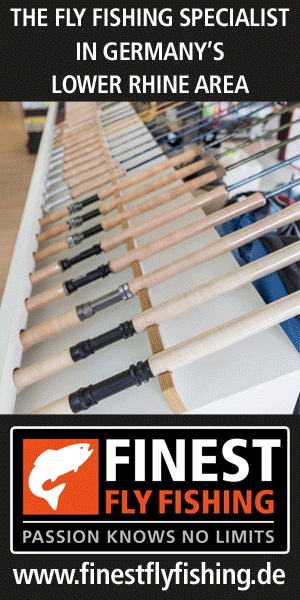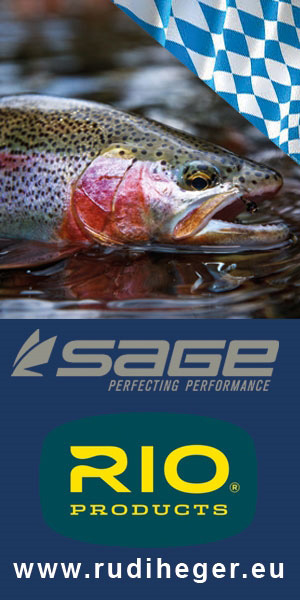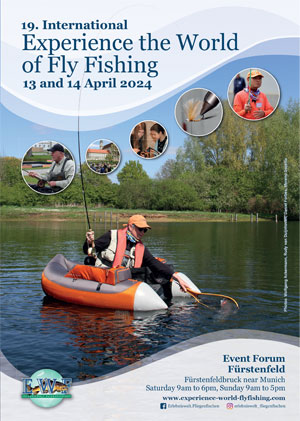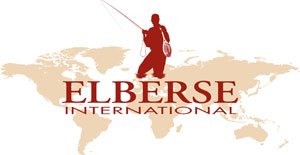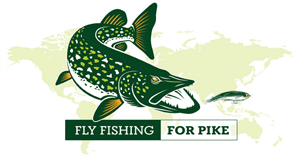15 years of fly fishing at an international level,
15 years of fly tying, casting, and the exchange of knowledge,
15 years of simply being together, talking, and feeling comfortable with a pursuit which ties us to nature.
Time does pass so quickly. Who would have ever thought years ago on the shores of Lake Starnberger where it all began. And now the EWF is the meeting place for all who share this pursuit no matter where in the world they come from.

Once again, just as in the last 13 years, the EWF is sponsoring the Fly Tying Championship which has become a tradition. A very special fly is appropriate for such an occasion. As one of two patterns, the organizers have now decided on a true evergreen: the PANAMA fly!
As announced a few days ago and published on the EWF website, the “father of the championship,” Gerd Peter Wieditz, provided some information about the history of the fly. As I heard of the decision about the pattern, I researched in the world of fly tying and found some additional information. Just as the world-famous Panama hat has a colorful history, the no-less-known Panama fly has had a long development.

The Spaniards call it a “fly for the nostalgic” which recalls a bygone era, but with European roots and a form which is not common today. It is called a “jewel” of French fly tying or better said, its crown: visually distinct, but very popu-lar among French fly fishers. The disadvantage is the relative difficulty in tying it which nearly led to its disappearance from the fly fisher’s repertory and from fly shops. The tyer needs to apply several techniques (both common and un-common) – I would say this is almost a “jackalope” in the fly realm – to tie the fly. That all has visual appeal, beginning with the tail made from unmistakable orange with black dye golden pheasant feathers and the nearly unconventional position of the double wing. Really a challenge for the fly tyer!
As so often, one finds varied information about the fly’s origins. Most likely, the fly can be ascribed to the Breton school of fly tying and it probably was developed between the two world wars. It is slightly reminiscent of Baroque art: it has everything we know from “true” art and varied tying techniques. Looking at the fly from the point of view of a fly tyer, you immediately recognize a large hook tied to be a mixture of mayfly and a fat, just-emerged caddis ready for flight. The French author Michel Flenet found that the predecessor to the Panama fly is a Bretonian fly called the “Irresistible de Cavalier” which closely resembles the Panama fly.

And the story continues: dig deeper into the history of the Panama fly and you will find in old catalogs of the RAGOT company a precise separation into female and male flies. They differ only in the way they are tied. Probably the separa-tion is the result of differing tying methods and materials. The “Practical Handbook for Fly Tying” by H. Pethe shows differing patterns. It is said to show black and white drawings as tying instructions.
We can see that the fly tying world is endless. Developed over time are differing patterns dependent, of course, on the imagination of the tyer, some more complex, some simpler. The Dutch fly tying school should not be forgotten. The famous Hans van Klinken produced a more simply tied version which is reminiscent of the original French version. The Frenchman Jean Paul Dessaigne developed a version and his tying emphasizes material contrasts and very accurate tying. It is claimed that the fly is always successful. It is supposed to be attractive in any weather.
So, dear fly fisher and tyer, now you are in the spot. Apply your talents and, with your entry in the Fly Tying Championship, pay homage to the this fly because just the name “Panama” sounds majestic.
I wish you lots of fun and success,
Adrian Bontza
Fly tied by Umberto Oreglini
Also look at:
http://flyfishing-blog.com/flyfishing-blog.com/2019/12/02/for-the-second-time-at-the-ewf-linda-bachand-from-the-usa/
http://flyfishing-blog.com/flyfishing-blog.com/2019/11/27/again-at-the-ewf-stefano-tieri-from-italy/
http://flyfishing-blog.com/flyfishing-blog.com/2019/11/18/for-the-first-time-at-the-ewf-gary-hanke-from-canada/
